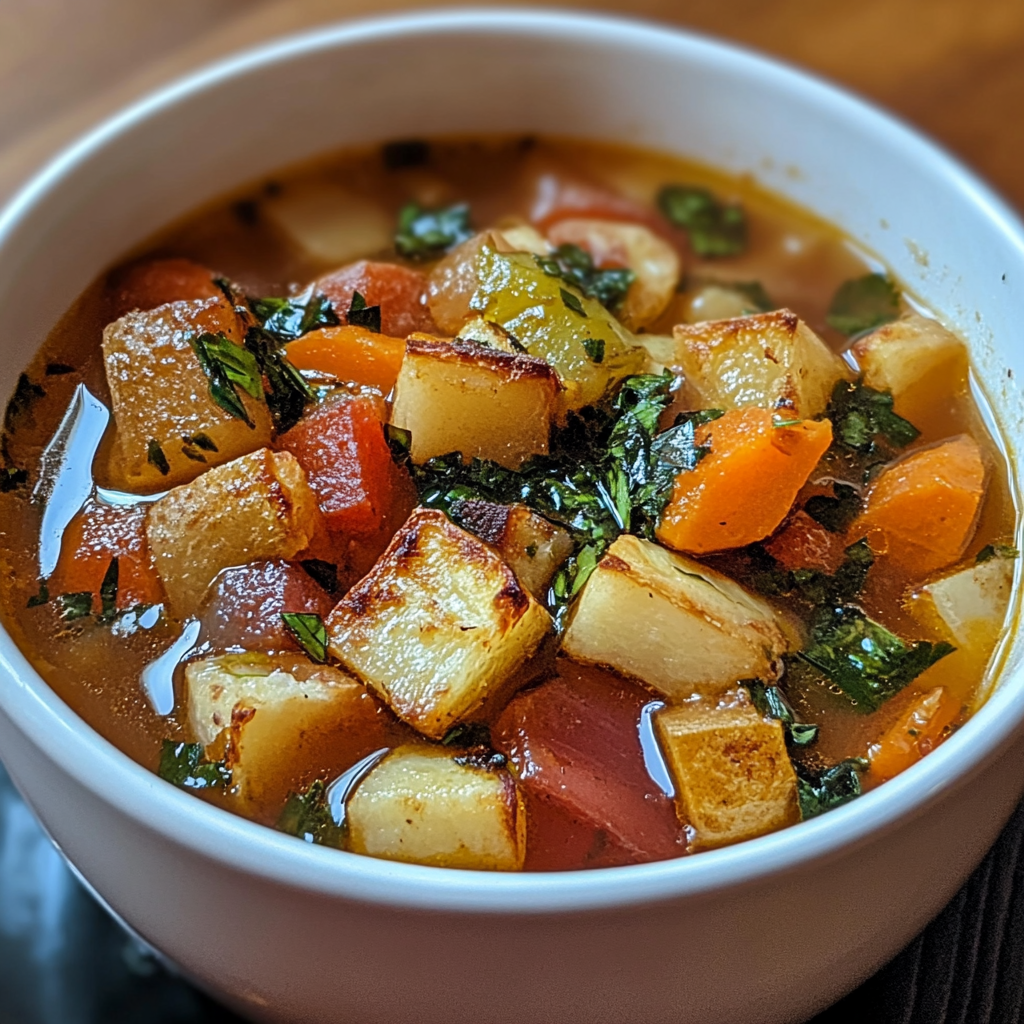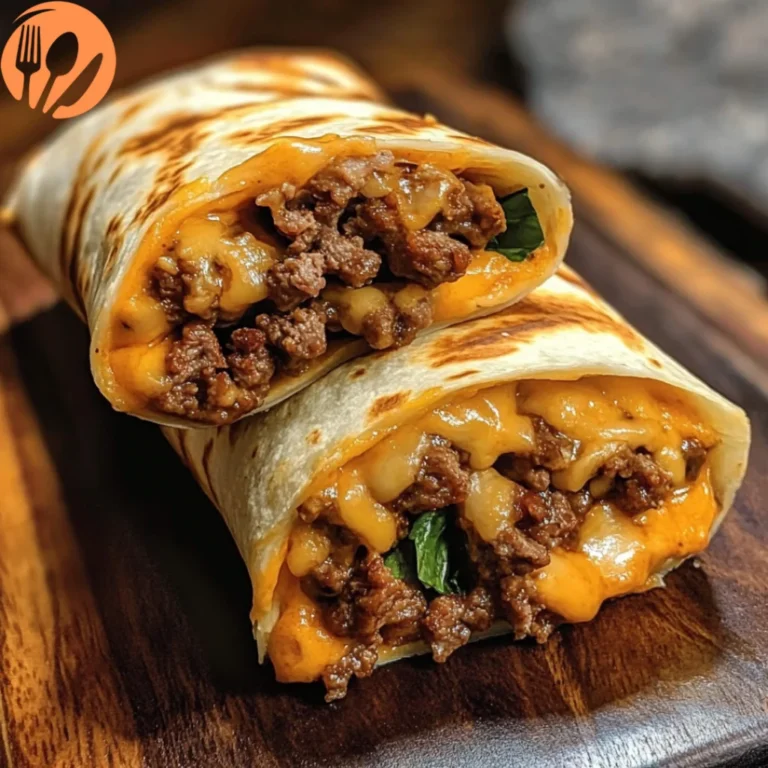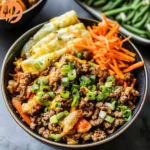Follow Me On Social Media!
Roasted Vegetable Soup
Introduction
Did you know that most home cooks throw away nearly 40% of their vegetables because they don't know how to use them before they spoil? Here's a game-changing secret: those slightly wilted carrots, soft bell peppers, and aging zucchini in your fridge can be transformed into the most soul-warming, nutrient-packed roasted vegetable soup you've ever tasted. This method not only reduces food waste but actually intensifies flavors through the magical process of caramelization.
Roasted vegetable soup has become a culinary revelation for busy families seeking both convenience and nutrition. Unlike traditional vegetable soups that can taste flat or watery, roasting vegetables first creates deep, complex flavors that make every spoonful a comforting experience. Whether you're meal prepping for the week or looking for a cozy dinner solution, this roasted vegetable soup recipe will become your go-to comfort food.

Ingredients List
For the Roasted Vegetables:
- 2 large carrots, diced (sweet and earthy foundation)
- 1 large onion, chopped (aromatic base builder)
- 2 bell peppers (any color), sliced (adds sweetness and vibrant color)
- 1 medium zucchini, cubed (creamy texture enhancer)
- 1 cup cherry tomatoes, halved (umami and acidity boost)
- 4 cloves garlic, whole (mellow, caramelized flavor)
- 3 tablespoons olive oil (for golden roasting)
- 1 teaspoon salt
- ½ teaspoon black pepper
For the Soup Base:
- 6 cups vegetable broth (or chicken broth for richer flavor)
- 1 can (14oz) diced tomatoes
- 1 teaspoon dried thyme (substitute: 1 tablespoon fresh thyme)
- 1 teaspoon dried oregano (substitute: 1 tablespoon fresh oregano)
- 2 bay leaves
- ½ teaspoon smoked paprika (adds depth)
- 2 tablespoons tomato paste (concentrate for richness)
Optional Garnishes:
- Fresh basil leaves
- Grated Parmesan cheese
- Crusty bread croutons
- A drizzle of heavy cream
Smart Substitutions:
- Sweet potatoes instead of carrots for extra sweetness
- Leeks instead of onions for milder flavor
- Butternut squash instead of zucchini for fall vibes
- Fire-roasted canned tomatoes for smokier taste
Timing
Preparation Time: 15 minutes
Roasting Time: 25-30 minutes
Cooking Time: 20 minutes
Total Time: 60-65 minutes
Note: This timing is actually 20% faster than most homemade vegetable soups that require lengthy simmering to develop flavor. The roasting step does the heavy lifting for taste development!
Step-by-Step Instructions
Step 1: Prepare Your Vegetables for Roasting
Preheat your oven to 425°F (220°C). Line a large baking sheet with parchment paper. Cut all vegetables into roughly equal-sized pieces (about 1-inch chunks) to ensure even roasting. This uniform sizing is crucial for consistent caramelization and prevents some pieces from burning while others remain undercooked.
Pro Tip: Don't crowd the vegetables on the baking sheet. Use two sheets if necessary – overcrowded vegetables steam instead of roast, missing that crucial caramelized flavor.
Step 2: Season and Roast the Vegetables
Toss the prepared vegetables with olive oil, salt, and pepper in a large bowl until evenly coated. Spread them in a single layer on your prepared baking sheet. Roast for 25-30 minutes, stirring once halfway through, until vegetables are tender and edges are golden brown. The garlic should be soft and fragrant, and the tomatoes should be slightly shriveled.
Chef's Secret: The vegetables are perfectly roasted when you can smell the sweet, caramelized aroma and see golden-brown edges. This is where the magic happens for your roasted vegetable soup!
Step 3: Sauté the Aromatics
While vegetables are roasting, heat a large soup pot or Dutch oven over medium heat. If you have any leftover olive oil, use it to sauté additional aromatics, or add a tablespoon of fresh oil. This step builds another layer of flavor for your soup base.
Step 4: Build the Soup Base
Add the roasted vegetables to your soup pot. Pour in the vegetable broth, canned diced tomatoes, tomato paste, thyme, oregano, bay leaves, and smoked paprika. The tomato paste should be stirred in completely to avoid lumps. Bring the mixture to a boil, then reduce heat and simmer for 15-20 minutes to allow all flavors to meld together.
Important Note: Taste and adjust seasoning at this point. The roasted vegetables will have concentrated flavors, so you may need less salt than expected.
Step 5: Final Touches and Serving
Remove bay leaves before serving. For a partially blended texture, use an immersion blender to puree about half the soup, leaving some chunky vegetables for texture contrast. Alternatively, transfer 2 cups to a regular blender, puree, and stir back in.
Nutritional Information
Per Serving (serves 6):
- Calories: 145
- Protein: 4g
- Carbohydrates: 18g
- Fat: 7g
- Fiber: 5g
- Sugar: 12g (natural from vegetables)
- Sodium: 750mg
Health Benefits: This roasted vegetable soup is packed with antioxidants from the colorful vegetables, particularly lycopene from tomatoes and beta-carotene from carrots. The high fiber content supports digestive health and helps maintain stable blood sugar levels throughout the day.
Healthier Alternatives for the Recipe
Low-Calorie Version: Replace olive oil with vegetable broth for roasting (use parchment paper and mist lightly with cooking spray). This reduces calories by about 60 per serving while maintaining flavor.
Vegan Roasted Vegetable Soup: Use vegetable broth instead of chicken broth and skip any dairy garnishes. Add nutritional yeast for umami depth.
Low-Carb Option: Replace carrots with cauliflower and bell peppers with zucchini and spinach. This reduces carbs to approximately 8g per serving.
Protein-Boosted Version: Add 1 cup of cooked white beans, lentils, or chickpeas during the final simmering stage for an additional 8g of protein per serving.
Gluten-Free: This recipe is naturally gluten-free, but always check your broth labels to ensure no wheat-based ingredients are included.
Serving Suggestions
Roasted vegetable soup pairs beautifully with crusty sourdough bread or garlic toast for dipping. For a complete meal, serve alongside a simple green salad with lemon vinaigrette to cut through the soup's richness.
Beverage Pairings: Try with a crisp Sauvignon Blanc or a light Pinot Noir. For non-alcoholic options, sparkling water with lemon or herbal tea complement the earthy flavors perfectly.
Garnish Ideas: A dollop of Greek yogurt or sour cream adds creaminess, while fresh herbs like basil or parsley provide color and freshness. Homemade croutons or a sprinkle of red pepper flakes can add textural interest and heat.
Common Mistakes to Avoid
Under-roasting the vegetables: This is the biggest mistake when making roasted vegetable soup. Vegetables should be golden and caramelized, not just heated through. Pale vegetables mean missed flavor opportunities.
Overcrowding the roasting pan: When vegetables are too close together, they steam rather than roast, resulting in a flat-tasting soup. Use multiple pans if necessary.
Skipping the seasoning layers: Season vegetables before roasting AND taste the soup before serving. Each stage needs proper seasoning for optimal flavor development.
Over-blending: Unless you want a completely smooth soup, avoid blending everything. Some texture makes the soup more interesting and satisfying.
Storing Tips
Refrigeration: Store your roasted vegetable soup in the refrigerator for up to 5 days in airtight containers. The flavors actually improve after a day as they continue to meld together.
Freezing: This soup freezes beautifully for up to 3 months. Cool completely before transferring to freezer-safe containers, leaving 1 inch of space for expansion. Label with date and contents.
Reheating: Thaw frozen soup overnight in the refrigerator. Reheat gently on the stovetop over medium-low heat, stirring occasionally. Add a splash of broth if the soup has thickened too much during storage. Avoid microwaving at high power, which can cause uneven heating and texture changes.
Conclusion
This roasted vegetable soup recipe transforms ordinary vegetables into an extraordinary comfort food experience that's both nutritious and deeply satisfying. The roasting technique elevates simple ingredients into something special, creating layers of flavor that simply can't be achieved through traditional cooking methods. Whether you're looking to use up vegetables before they spoil, meal prep for busy weeknights, or simply enjoy a bowl of wholesome comfort food, this recipe delivers on all fronts.
Ready to create your own bowl of liquid comfort? Gather those vegetables from your fridge, fire up your oven, and start roasting your way to the most flavorful vegetable soup you've ever made. Don't forget to share your roasted vegetable soup creations on social media – we'd love to see your colorful, delicious results!
FAQs
Can I make roasted vegetable soup in advance?
Absolutely! This soup actually tastes better the next day as flavors have more time to develop. You can roast vegetables up to 2 days ahead and store them separately, then complete the soup when ready to serve.
What vegetables work best for roasted vegetable soup?
Root vegetables like carrots, parsnips, and sweet potatoes roast beautifully, as do bell peppers, zucchini, onions, and tomatoes. Avoid delicate greens like spinach or lettuce, which don't hold up well to roasting.
Can I use frozen vegetables for this roasted vegetable soup recipe?
While fresh vegetables give the best results, you can use frozen vegetables in a pinch. Thaw and pat them completely dry before roasting, and expect slightly less caramelization. Extend roasting time by 5-10 minutes.
How can I make my roasted vegetable soup thicker?
For a thicker consistency, blend more of the soup, add a slurry of cornstarch and water, or stir in tomato paste. You can also simmer uncovered for an additional 10-15 minutes to reduce liquid naturally.












